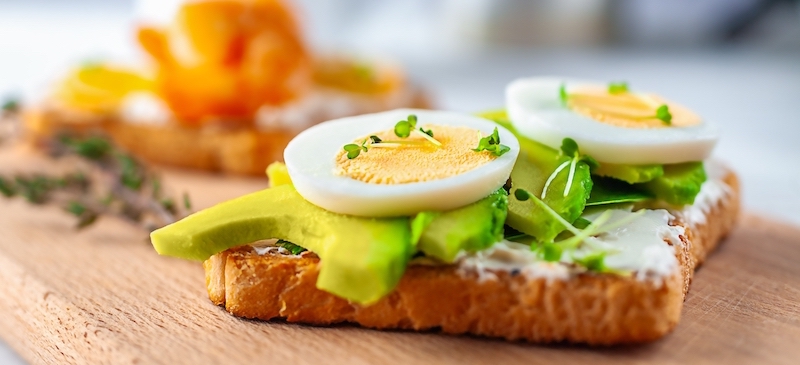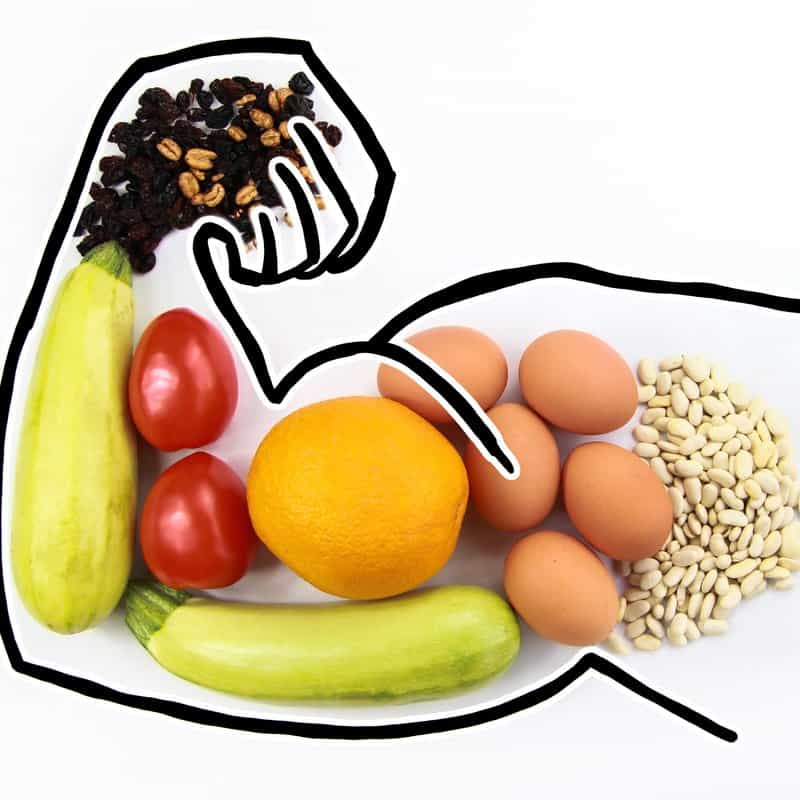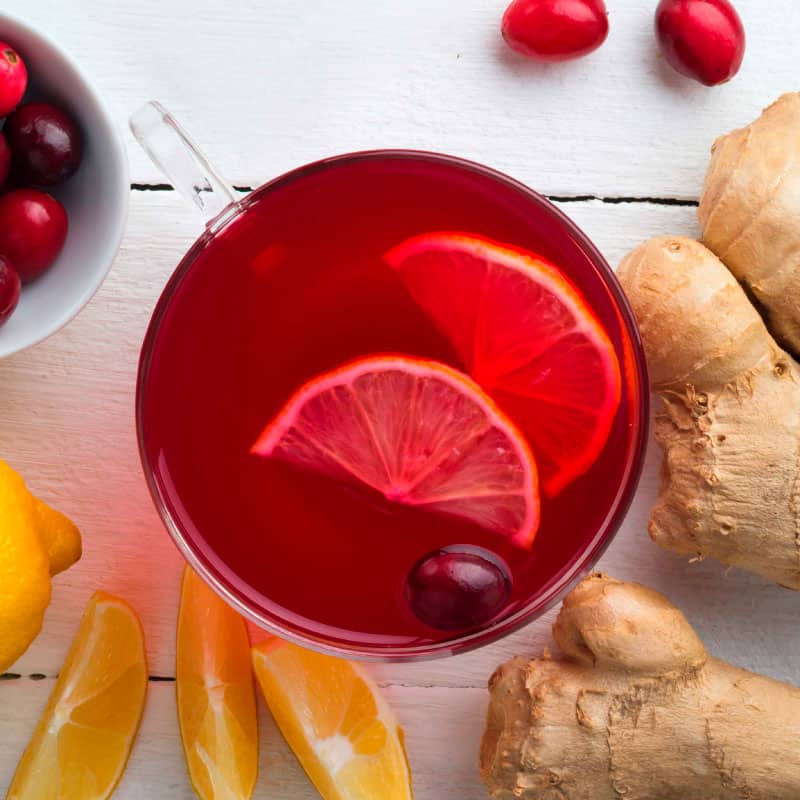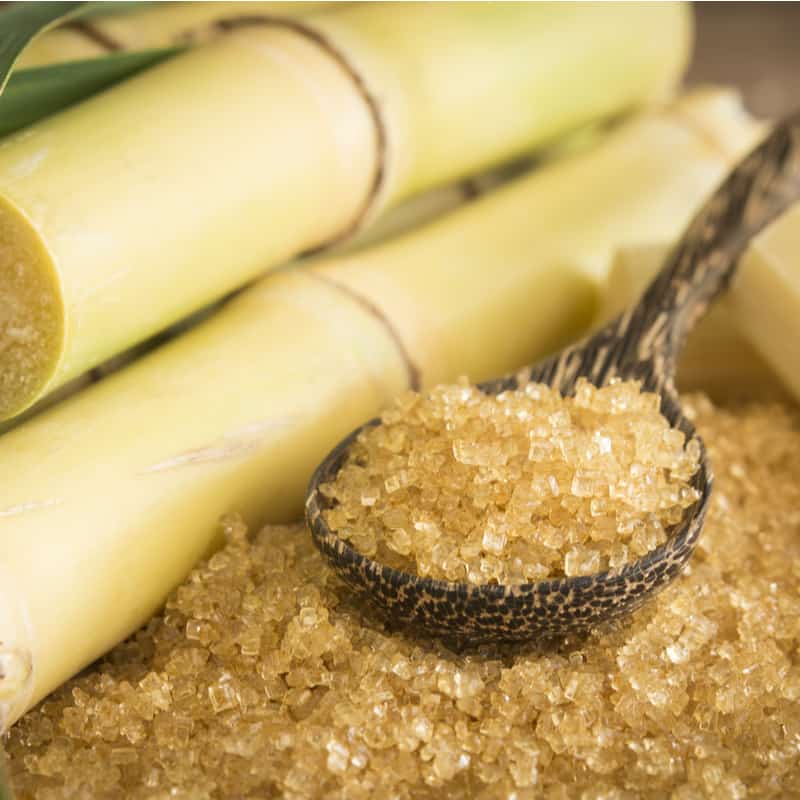This Dr. Axe content is medically reviewed or fact checked to ensure factually accurate information.
With strict editorial sourcing guidelines, we only link to academic research institutions, reputable media sites and, when research is available, medically peer-reviewed studies. Note that the numbers in parentheses (1, 2, etc.) are clickable links to these studies.
The information in our articles is NOT intended to replace a one-on-one relationship with a qualified health care professional and is not intended as medical advice.
This article is based on scientific evidence, written by experts and fact checked by our trained editorial staff. Note that the numbers in parentheses (1, 2, etc.) are clickable links to medically peer-reviewed studies.
Our team includes licensed nutritionists and dietitians, certified health education specialists, as well as certified strength and conditioning specialists, personal trainers and corrective exercise specialists. Our team aims to be not only thorough with its research, but also objective and unbiased.
The information in our articles is NOT intended to replace a one-on-one relationship with a qualified health care professional and is not intended as medical advice.
Low Residue Diet: What to Eat, Avoid and Who Should Follow It
September 19, 2025

A low residue diet is often recommended for people with digestive conditions or those who are preparing for medical procedures, like a colonoscopy. This eating plan aims to reduce the amount of undigested food that passes through the intestines, giving the digestive tract time to rest and heal.
Keep reading to learn what a low residue diet is, who it’s for, which foods are allowed or restricted, and how to follow it safely.
What is a low residue diet?
A low residue diet limits high-fiber foods and other ingredients that add bulk (or “residue”) to stool. “Residue” refers to the undigested food, fiber and other substances that remain in the gut and stool after digestion.
The goal of the diet is to reduce bowel movements and decrease irritation in the gastrointestinal (GI) tract. This diet is often used short term under medical supervision.
While similar to a low-fiber diet, a low residue diet may also restrict certain dairy products, seeds and foods that stimulate the bowels.
Who should follow this diet?
Doctors may recommend a low residue diet for people with:
- Inflammatory bowel disease (IBD), including Crohn’s disease or ulcerative colitis
- Diverticulitis
- Bowel obstruction or narrowing of the intestines (strictures)
- Post-surgical recovery involving the GI tract
- Radiation or chemotherapy affecting the digestive system
- Colonoscopy preparation
Always consult your healthcare provider before starting a low residue diet, especially if you plan to follow it for more than a few days.
Foods to eat
These low residue diet foods are easy to digest and produce minimal residue in the intestines:
Grains and starches
- White bread, rolls or toast without seeds
- Plain white rice or pasta
- Low-fiber cereals (like cornflakes or puffed rice)
- Cooked cereals (like farina, cream of wheat or grits)
- Refined crackers and plain bagels
Protein
- Tender meats (chicken, turkey, fish)
- Lean beef, lamb or pork
- Eggs
- Smooth nut butters (in small amounts)
Dairy (if tolerated)
- Milk (in limited quantities)
- Yogurt without fruit or seeds
- Mild cheese
Fruits and vegetables (well-cooked or canned with no seeds or skin)
- Bananas, applesauce, canned peaches or pears
- Cooked carrots, potatoes, green beans or squash
- Asparagus tips, beets, mushrooms or spinach
- Tomato sauce
- Soft cantaloupe and honeydew
- Pumpkin and winter squash
- Avocado
Beverages
- Water
- Clear juices (apple, white grape)
- Broths and clear soups
- Herbal teas
- Decaf coffee
- Carbonated drinks
- Milk
- Cranberry juice
- Orange juice (with no pulp)
- Strained vegetable juices
Condiments
- Butter and margarine
- Oils
- Ketchup
- Mayo
- Sour cream
- Smooth sauces and dressings
- Soy sauce
- Clear honey, syrup or jelly
Snacks
- Plain cakes or cookies
- Gelatin, plain puddings, custard or sherbet
- Ice cream or ice pops
- Hard candy
- Pretzels (not whole grain)
- Vanilla wafers
| Category | Allowed Foods / Examples |
|---|---|
| Grains & Starches | White bread, rolls or toast without seeds; plain white rice or pasta; low-fiber cereals (cornflakes, puffed rice); cooked cereals like farina, cream of wheat, grits; refined crackers; plain bagels. |
| Protein | Tender meats (chicken, turkey, fish); lean beef, lamb or pork; eggs; smooth nut butters (small amounts). |
| Dairy (if tolerated) | Milk (limited); yogurt without fruit or seeds; mild cheese. |
| Fruits & Vegetables (well cooked or canned, no skins or seeds) | Bananas, applesauce, canned peaches or pears; cooked carrots, potatoes, green beans or squash; asparagus tips, beets, mushrooms, spinach; tomato sauce; soft cantaloupe and honeydew; pumpkin and winter squash; avocado. |
| Beverages | Water; clear juices (apple, white grape); broths and clear soups; herbal teas; decaf coffee; carbonated drinks; milk; cranberry juice; orange juice (no pulp); strained vegetable juices. |
| Condiments | Butter, margarine; oils; ketchup; mayo; sour cream; smooth sauces and dressings; soy sauce; clear honey, syrup, or jelly. |
| Snacks / Sweets | Plain cakes or cookies; gelatin; plain puddings, custard or sherbet; ice cream or ice pops; hard candy; pretzels (not whole grain); vanilla wafers. |
Foods to avoid
Avoid high-fiber, hard-to-digest or gas-producing foods that can irritate your digestive tract:
Grains and seeds
- Whole grain bread, brown rice, quinoa
- Bran cereals, granola
- Seeds, nuts
- Whole grain cereals, crackers, pasta, rice, kasha
Fruits and vegetables
- Raw fruits with skins (e.g., apples, berries)
- Raw vegetables and leafy greens
- Corn, cabbage, broccoli, cauliflower
- Dried fruits (prunes, raisins, figs, pineapple)
- Peas, Brussels sprouts, onions
- Potatoes with skin
- Pickles, olives, relish, sauerkraut, horseradish
Protein
- Tough, fatty or fried meats
- Smoked or cured meats
- Beans, lentils and legumes
- Chunky or crunchy nut butters
Dairy
- Full-fat or flavored dairy products
- Yogurt with fruit or seeds
Other foods
- Popcorn
- Coconut
- Spicy or heavily seasoned foods
- Jam, marmalade, preserves
- Fruit juices with pulp or seeds
- Prune juice
- Pear nectar
- Chocolate
- Caffeine
| Category | Foods to Avoid / Examples |
|---|---|
| Grains & Seeds | Whole grain bread; brown rice; quinoa; bran cereals; granola; seeds; nuts; whole grain cereals, crackers, whole-grain pasta; kasha. |
| Fruits & Vegetables | Raw fruits with skins (e.g. apples, berries); raw vegetables and leafy greens; corn; cabbage; broccoli; cauliflower; dried fruits (prunes, raisins, figs, pineapple); peas; Brussels sprouts; onions; potatoes with skin; pickles; olives; relish; sauerkraut; horseradish. |
| Protein | Tough, fatty or fried meats; smoked or cured meats; beans; lentils; legumes; chunky or crunchy nut butters. |
| Dairy | Full-fat or flavored dairy products; yogurt with fruit or seeds. |
| Other Foods | Popcorn; coconut; spicy or heavily seasoned foods; jam, marmalade, preserves; fruit juices with pulp or seeds; prune juice; pear nectar; chocolate; caffeine. |
Sample low residue diet menu
Here’s a simple one-day low residue diet meal plan:
Breakfast
- Scrambled eggs
- White toast with butter
- Applesauce
- Herbal tea
Snack
- Plain yogurt (no fruit)
Lunch
- Grilled chicken breast
- White rice
- Cooked carrots
- White grape juice
Snack
- Saltine crackers
- Banana (ripe, without skin)
Dinner
- Baked white fish
- Mashed potatoes (peeled)
- Canned peaches
- Chamomile tea
| Meal | Foods Included |
|---|---|
| Breakfast | Scrambled eggs; white toast with butter; applesauce; herbal tea. |
| Morning Snack | Plain yogurt (no fruit). |
| Lunch | Grilled chicken breast; white rice; cooked carrots; white grape juice. |
| Afternoon Snack | Saltine crackers; banana (ripe, without skin). |
| Dinner | Baked white fish; mashed potatoes (peeled); canned peaches; chamomile tea. |
Here is a sample low residue diet for a week. (Remember: Always remove skins, seeds and fibrous parts from fruits and vegetables. Portion sizes can be adjusted based on individual tolerance and doctor’s recommendations.)
Day 1
Breakfast:
- Scrambled eggs
- White toast with butter
- Applesauce
- Decaf herbal tea
Lunch:
- Grilled chicken breast
- White rice
- Cooked carrots
- Canned peaches
- Water
Snack:
- Plain yogurt (no fruit)
Dinner:
- Baked white fish
- Mashed potatoes (peeled)
- Steamed green beans (well-cooked)
- Clear broth
Day 2
Breakfast:
- Rice cereal with milk
- Banana (ripe, no skin or seeds)
- Herbal tea
Lunch:
- Turkey sandwich on white bread (no lettuce/tomato)
- Plain chips (in moderation)
- Applesauce
Snack:
- Saltine crackers
- Low-lactose cheese
Dinner:
- Poached chicken
- White pasta with butter or plain broth
- Cooked zucchini (no skin/seeds)
- Gelatin dessert
Day 3
Breakfast:
- Scrambled egg whites
- English muffin (plain, white)
- Canned pears
- Herbal tea
Lunch:
- Baked cod
- White rice
- Cooked squash (peeled and seeded)
- Clear juice (e.g., apple juice)
Snack:
- Low-fat pudding (no fruit pieces)
Dinner:
- Ground turkey patty
- Mashed sweet potato (peeled)
- Cooked spinach (strained or pureed)
- Chamomile tea
Day 4
Breakfast:
- Pancakes made with white flour (no nuts/fruits)
- Maple syrup
- Banana (mashed)
- Water
Lunch:
- Egg salad (no raw veggies) on white bread
- Potato chips (plain, small portion)
- Canned peaches
Snack:
- Cottage cheese (if tolerated)
Dinner:
- Tender roast beef (fat trimmed)
- White bread roll
- Cooked carrots
- Apple juice
Day 5
Breakfast:
- Plain bagel with cream cheese
- Applesauce
- Herbal tea
Lunch:
- Chicken and rice soup (strained, no skins or fibrous veggies)
- White toast
- Canned pear halves
Snack:
- Plain gelatin
Dinner:
- Baked tilapia
- Mashed potatoes
- Steamed green beans
- Clear broth
Day 6
Breakfast:
- Plain waffles (white flour)
- Butter or a drizzle of honey
- Canned fruit cocktail (no seeds/skins)
Lunch:
- Turkey meatballs
- Plain white pasta
- Cooked yellow squash (peeled and deseeded)
Snack:
- Plain yogurt
- Herbal tea
Dinner:
- Skinless grilled chicken
- White rice
- Steamed carrots
- Water or clear juice
Day 7
Breakfast:
- Rice cereal with milk
- Banana slices
- Chamomile tea
Lunch:
- Tuna salad (no celery or raw veg) on white bread
- Canned peaches
- Herbal tea
Snack:
- Saltine crackers
- Mild cheese
Dinner:
- Lean pork chop (well-cooked, tender)
- Mashed potatoes
- Cooked green beans
- Clear broth
Low residue diet for colonoscopy
Before a colonoscopy, your doctor may instruct you to follow a low residue or low-fiber diet for two to three days to ensure your bowel is clear for the procedure.
General guidelines:
- Eat only low residue foods two to three days before.
- Switch to clear liquids 24 hours before.
- Avoid red or purple drinks, which can discolor the colon.
Always follow your doctor’s specific instructions, as preparation protocols can vary.
Risks and side effects
While a low residue diet can relieve digestive symptoms in the short term, long-term use may have side effects, such as:
- Nutrient deficiencies due to limited fiber, vitamins and minerals
- Constipation in some individuals
- Disrupted gut microbiome, as fiber is essential for healthy gut bacteria
This diet is not meant to be permanent and should be followed only under medical supervision.
Frequently asked questions
What does low residue mean in diet?
A low residue diet minimizes undigested food (or “residue”) left in the bowel. The goal is to reduce stool volume and frequency, often for medical reasons like digestive flare-ups or prep for procedures like colonoscopy.
How long should you stay on a low residue diet?
Typically, it’s recommended for a few days to a few weeks, depending on your condition and your doctor’s advice.
Is a low residue diet the same as a low-fiber diet?
They’re similar, but a low residue diet also avoids foods that stimulate bowel activity (like dairy or caffeine), while a low-fiber diet focuses mainly on limiting plant fiber.
Can you drink coffee on a low residue diet?
It’s best to avoid caffeine, including coffee, as it can stimulate bowel movements.
What drinks are allowed on a low residue diet?
Water, clear juices, broths and certain herbal teas are usually allowed. Avoid carbonated beverages and anything with pulp or seeds.
Is dairy allowed on a low residue diet?
Some dairy is allowed in small amounts, but people with lactose intolerance should avoid it altogether.
Which foods are low in residue?
Low residue foods leave minimal undigested material in the colon. Examples include:
- White rice and refined grains
- White bread without seeds or whole grains
- Cooked or canned vegetables (no skins or seeds)
- Ripe bananas, canned peaches and melon
- Eggs, poultry, fish
- Smooth peanut butter
- Dairy (if tolerated)
- Clear juices and broth
What foods are good for a low residue diet?
Good foods include:
- Lean meats and fish
- Eggs
- Dairy products, like milk, yogurt and cheese (if tolerated)
- Refined cereals (like cream of wheat)
- Well-cooked, skinless vegetables (carrots, green beans, squash)
- Peeled fruits or canned fruit (like applesauce or ripe bananas)
- White rice, plain pasta, white bread
Is rice low residue?
Yes, white rice is low residue. Avoid brown rice, which contains more fiber.
How does a low-fiber diet differ from a low-residue diet?
A low-fiber diet limits indigestible plant fiber (like from whole grains, raw vegetables). A low-residue diet includes low-fiber foods but also reduces foods that stimulate bowel activity (like dairy, caffeine and fatty foods).
So, a low-residue diet is typically stricter and more comprehensive than just a low-fiber diet.
How do you transition off a low-residue diet?
- Gradually reintroduce fiber: Start with small amounts of cooked vegetables, peeled fruits and whole grains.
- Increase hydration to help with digestion.
- Monitor tolerance, and adjust based on how your body reacts.
Can you eat tuna on a low residue diet?
Yes, plain canned or cooked tuna is allowed. Avoid spicy, breaded or oily versions.
Can I eat chocolate on a low residue diet?
In small amounts, plain chocolate is generally tolerated. Avoid chocolate with nuts, seeds or dried fruit, along with dark chocolate with high fiber content.
What is a low residue diet for colonoscopy?
It’s a short-term, pre-colonoscopy diet that limits fiber and undigested food to keep the colon clear. It typically includes:
- Clear liquids
- White bread, white rice, plain pasta
- Eggs, fish and skinless chicken
- No raw fruits/vegetables, dairy, seeds or whole grains
It’s usually followed two to three days before the procedure.
What foods should be avoided on a low residue diet?
Avoid:
- Whole grains, bran, brown rice
- Raw or dried fruits and vegetables
- Legumes (beans, lentils, peas)
- Nuts and seeds
- Popcorn
- Tough meats
- Caffeinated beverages
- Fried, spicy or highly seasoned foods
What meals can I make on a low residue diet?
Sample low residue meals include::
- Breakfast: Scrambled eggs, white toast, ripe banana
- Lunch: Tuna sandwich on white bread, canned peaches
- Dinner: Baked chicken, mashed potatoes (no skin), cooked carrots
- Snack: Yogurt (if tolerated), plain crackers
Can you eat mashed potatoes on a low residue diet?
Yes, as long as they are made without skins and are not too buttery or creamy.
Conclusion
- A low residue diet is a short-term eating plan designed to minimize digestive workload and support healing of the gastrointestinal tract. It can be an important tool for managing flare-ups of digestive conditions or preparing for procedures like a colonoscopy.
- While effective when used correctly, it’s essential to follow this diet under medical guidance to avoid nutrient deficiencies and ensure proper recovery.
- If you’re considering a low residue diet, consult your healthcare provider to tailor the plan to your specific needs and medical history.







